Desert Salamanders
Watching Tiger Salamanders in Canyons of the Ancients
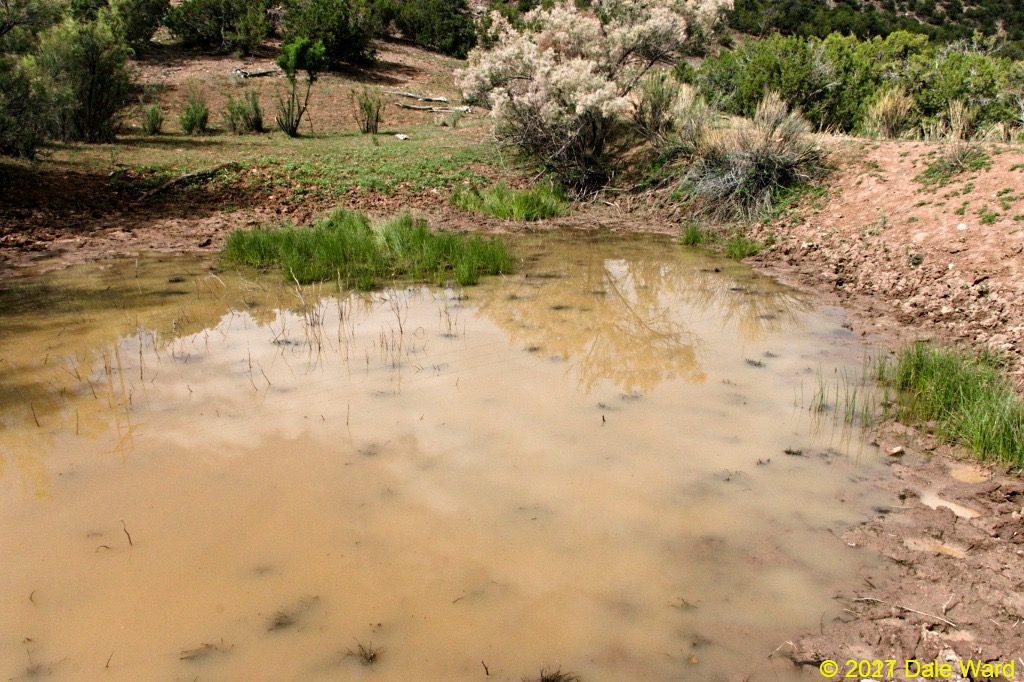 Cattle tank in the Canyons of the Ancients
Cattle tank in the Canyons of the Ancients
Early this Summer, Jack and I were out roaming the Canyons of the Ancients. We were in search of hawk nests, pretty scenery, the remains of vanished civilizations…the usual things.
It was a hot day and we were both tired, and we were happy when we came across a cattle tank.
We’re glad to find cattle tanks because it gives Jack a chance to splash around and cool off, and it means that I can save the water in my backpack for myself. Since there is often not a lot of water around, stock tanks are also focal points for wildlife. There may be interesting tracks in the mud, cool birds and nice insects.
This tank didn’t have very good water in it. It was shallow and muddy, and did not smell as nicely as it could have. It was perhaps 12 inches deep.
It was also loaded with Tiger Salamander larvae. And Tiger Salamander larvae are spectacular.
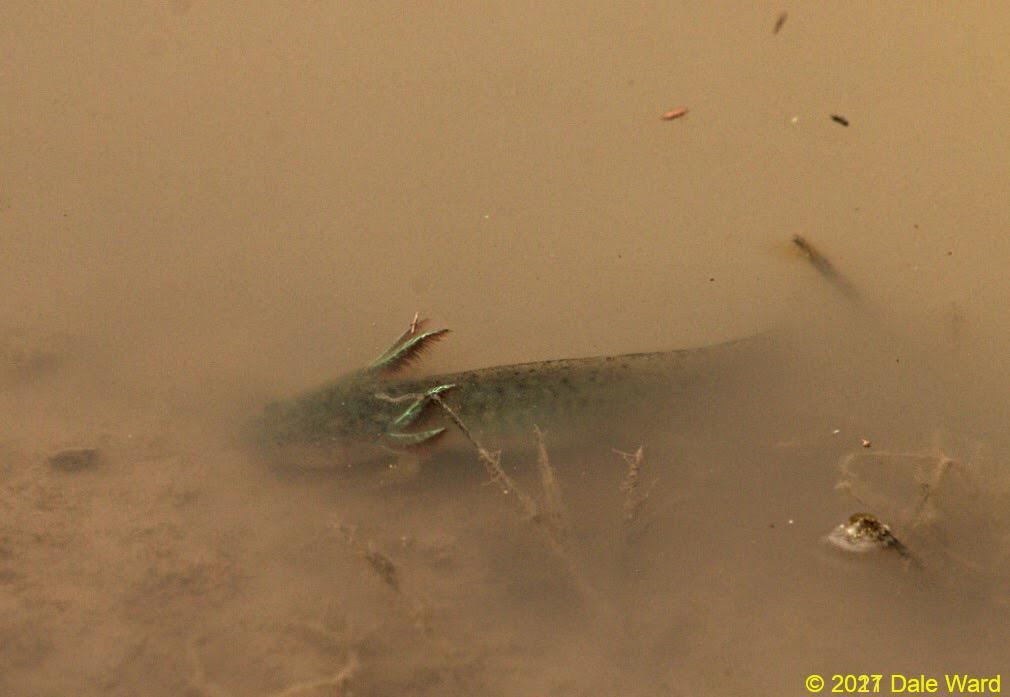 Tiger Salamander larva cruising the shallows of the cattle tank
Tiger Salamander larva cruising the shallows of the cattle tank
They have spindly little legs and large tail fins. They’ve got big, feathery, external gills on their heads, so they can extract oxygen from the water.
Older larvae, such as the ones in this tank, can also breathe air directly using their lungs. Breathing air directly becomes very useful in water such as this, which probably doesn’t have a lot of dissolved oxygen in it. These Salamanders would dash to the surface occasionally and gulp mouthfuls of air as we watched.
Most Tiger Salamander larvae metamorphose into adult Tiger Salamanders after a few months. The larvae lose their external gills and their tail fins shrink. They leave the pond and live their lives on land. As adults, they spend most of their lives underground, in burrows. They’ll return to the water in the Spring to breed.
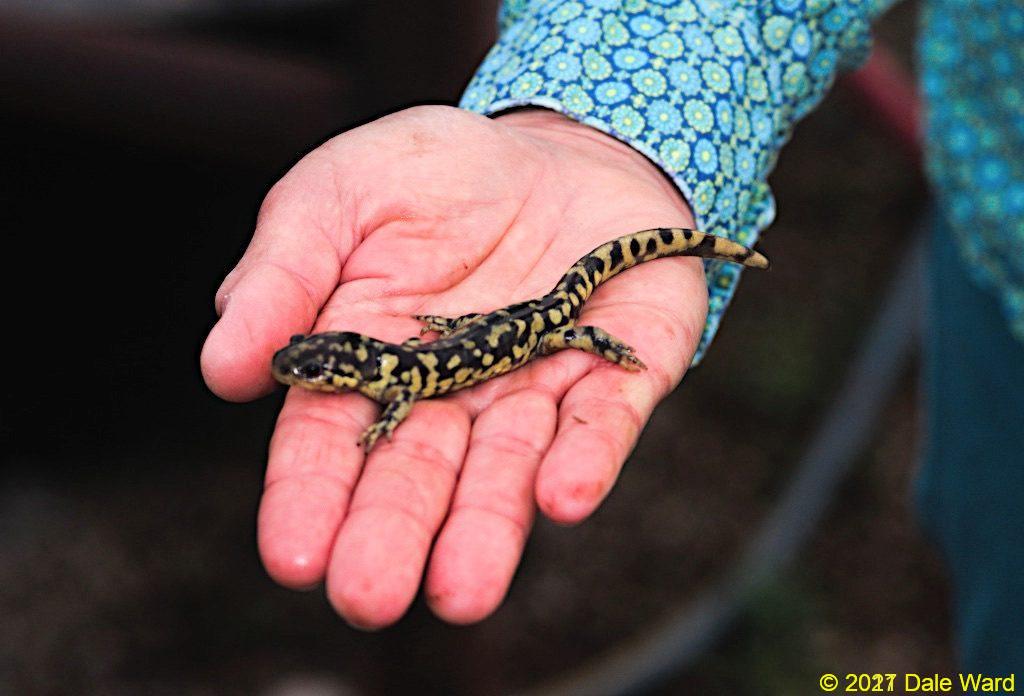 An adult Tiger Salamander (found on a different day). This is what the larvae will eventually change into.
An adult Tiger Salamander (found on a different day). This is what the larvae will eventually change into.
If, however, the larvae find they are in an especially good pool, or if they somehow detect that conditions on the land are not good, they’ll stay in their larval form. These larvae stay in the aquatic stage for their whole lives. They can reproduce, even though they are still in their larval form. They’ll just stay in the pond, continually growing.
Peter Pan in a stock tank.
Tiger Salamander larvae have another quirk. Some pools get crowded. And, in a small proportion of the population, this crowding switches a gene from one state to another…and turns the larva into a “Cannibal Morph”. These are like normal larvae, but they have bigger, more robust heads, and larger, recurved teeth. All the better to eat other Salamanders with.
These creatures blow my mind…they are so very weird. Tom Waits wrote a song entitled “Everything You Can Think Of Is True”. I’m pretty sure he did not write it with amphibians in mind…but he could have. It seems as though anything you can imagine, an amphibian somewhere does it.
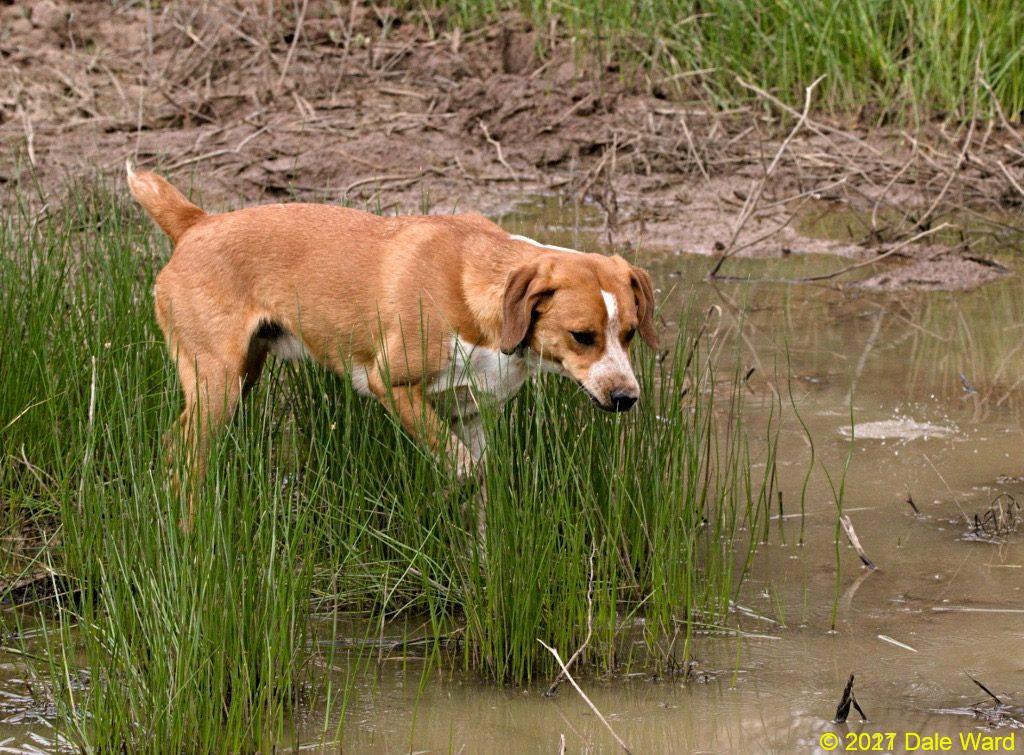 Jack the Troll discovers the salamander larvae
Jack the Troll discovers the salamander larvae
I spent twenty minutes or so trying to get pictures of the Salamander larvae as they were taking breaths of air. Jack was not an asset in these endeavours. Once he discovered that the larvae were in the pool, he had a rollicking good time stalking and chasing them.
He was covered in wads of smelly wet clay when we started the return hike. By the time we got back to the Jeep, the clay had dried into clods and clumps in his fur, but still retained the stagnant, fishy odor of the stock tank. Even Jack was troubled by the smell.
He got a bath when we got home, and that helped with the odor.
The Jeep, however, still smelled couple of weeks later when we revisited the stock tank.
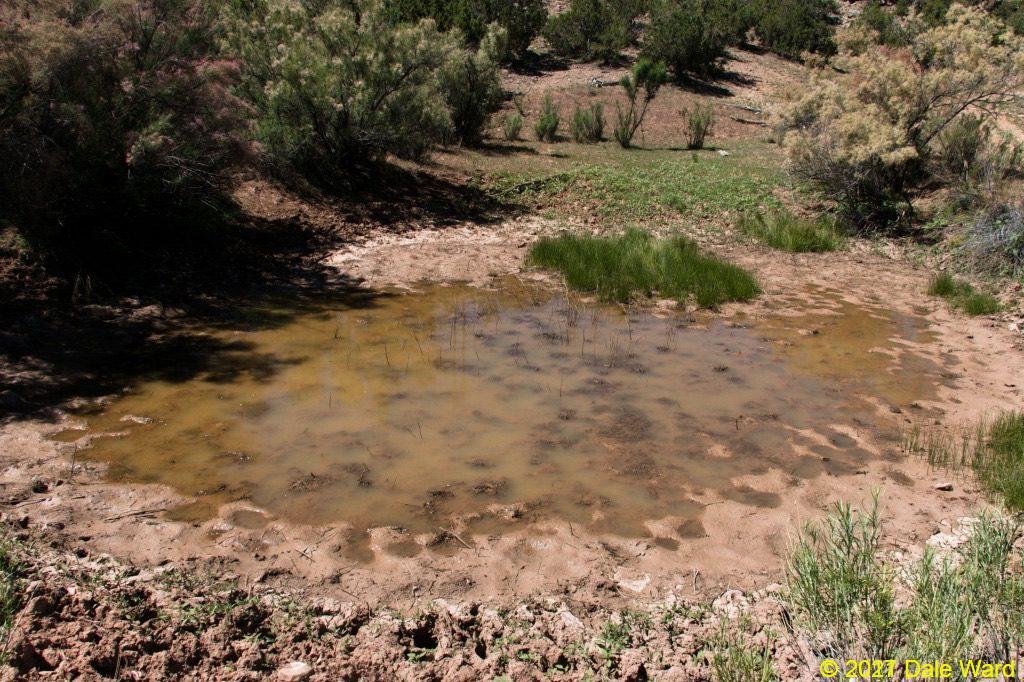 Same tank a couple of weeks later - no salamander larvae
Same tank a couple of weeks later - no salamander larvae
The tank was much shallower, perhaps only 4 or 5 inches at its deepest. It was drying very quickly, and I’m betting that all of the water would be gone within a week.
I didn’t see any Salamander larvae.
At first I thought that an evil Raccoon or malicious Heron had found them, then eaten them. However, in this video by Nature North, the filmmaker found that Salamander larvae can make the transition from their aquatic to their terrestrial forms in as little as four or five days (!) when their ponds dry up. The Internet can be a wonderful thing.
I like to think that these Salamanders made the transition in time, and are now happily ensconced in rodent burrows, waiting for next Spring.